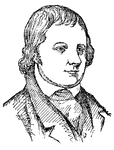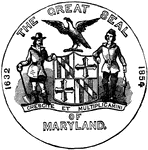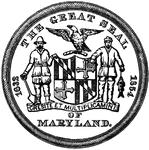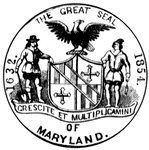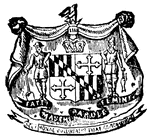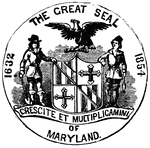The Maryland ClipArt gallery includes 84 illustrations related to the Old Line State.

13 Star United States Flag, 1776
Color illustration of a 13 Star United States flag. The original 13 stars represent the states of Delaware,…

13 Star United States Flag, 1776
Black line illustration of a 13 Star United States flag. The original 13 stars represent the states…

Great Seal of Andros
The seal of Sir Edmund Andros, the 3rd and 5th Royal Governor of colonial Maryland.
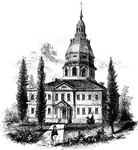
Annapolis State House
"The State House in Annapolis. This fine building is situated upon an elevation in the center of the…

Antietam
"The invasion of Maryland--General Meade's Army crossing the Antietam in pursuit of Lee, July 12th,…

Sunken Road at Battle of Antietam
The Sunken Road at the Battle of Antietam. The Battle of Antietam, also known as the Battle of Sharpsburg,…

Sunken Road at Battle of Antietam
Scene at the Sunken Road at the Battle of Antietam. The Battle of Antietam, also known as the Battle…
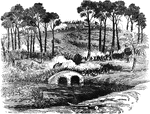
Battle of Antietam
"Battle of Antietam, Md. Burnside's division carrying the bridge over the Antietam Creek and storming…

Battle of Antietam
The Battle of Antietam (also known as the Battle of Sharpsburg, particularly in the South), fought on…

Battle of Antietam
Scene by rail-fence, Antietam after the Battle of Antietam, also known as the Battle of Sharpsburg.…

Battle of Antietam
The Battle of Antietam, also known as the Battle of Sharpsburg, was fought on September 17, 1862, near…

Battle of Antietam
"Battle of Antietam, Burnside's Division, left wing- brilliant and decisive bayonet charge of Hawkins's…

Battle of Antietam
"Battle of Antietam- the opening of the fight- Hooker's division fording the Great Antietam Creek to…

Battle of Antietam
"Battle of Antietam. The centre and right wing of General McClellan's Army, commanded by Generals Hooker,…

Battle of Antietam
"The battle of Antietam. The One Hundred and Thirtieth Pennsylvania Regiment of Volunteers burying the…

Battle of Antietam
"Battle of Antietam, Burnside's Division, left wing- brilliant and decisive bayonet charge of Hawkins's…

Battle of Antietam
"Battle of Antietam, Burnside's Division, left wing- brilliant and decisive bayonet charge of Hawkins's…

The Armistead Vase
The grateful citizens of Baltimore presented Colonel Armistead with an elegant silver vase, in the form…
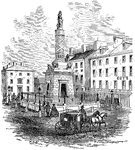
Battle of North Point Monument
A monument for The Battle of North Point, fought on September 12, 1814.

Bivouac of the Eleventh Indiana Volunteers
Our special artist, who accompanied General McClellan's command, sketched the gallant Eleventh Indiana…

Blue Ridge Pass
"The victory at Blue Ridge Pass, Sunday, September 14th, 1862- infantry charge, and rout of the Confederates.…

Battle of Blue Ridge Pass
"Battle of Blue Ridge Pass, Sunday, September 14th, 1862- the first Federal victory in Maryland. On…
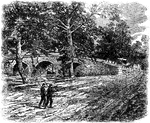
Burnside's Bridge
Burnside's Bridge is a landmark on the Antietam National Battlefield near Sharpsburg, Maryland. During…

Cecil Calvert, Lord Baltimore
Cecilius Calvert, also known as Lord Baltimore, was an English colonizer who was the first proprietor…

Cecilius Calvert
Cecilius Calvert, 2nd Baron Baltimore (August 8, 1605 – November 30, 1675), usually called Cecil,…

Silver Maryland XII Pence Coin, 1659
Maryland XII Pence (XII Pence) Maryland Colony coin from 1659. Obverse has an image of Lord Baltimore…

Confederate Invasion
"The Confederate invasion of Maryland and Pennsylvania. The Confederate cavalry crossing the Potomac,…

Confederates Crossing the Potomac
This sketch depicts the Confederates crossing the Potomac during the Maryland Campaign or the Antietam…

Conrad's Ferry
"Conrad's Ferry, Md., above Harrison's Island, on the Potomac River, the place of passage of Colonel…

Edward's Ferry
"Successful retreat of the Federal troops from the Virginia shore across a canal-boat bridge at Edward's…

Falling Waters
"Gallant charge of the Sixth Michigan cavalry over the enemy's breastworks, near falling Waters, Md.,…

Farmers Visiting
"Maryland and Pennsylvania farmers visiting the battlefield of Antietam, while the Federal troops were…

Ruins of Battery at Fort McHenry
Fort McHenry, in Baltimore, Maryland, is a star shaped fort best known for its role in the War of 1812…

Sallyport at Fort McHenry
Fort McHenry, in Baltimore, Maryland, is a star shaped fort best known for its role in the War of 1812…

Frederick City
"General McClellan and the Federal troops passing through Frederick City, Md., in pursuit of the Confederate…

Cavalry of General Banks
"A reconnoitring detachment of General Banks's cavalry, Hyattstown, Md., in the distance. There are…
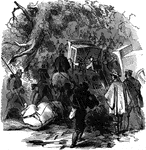
March of General Banks
"Incident in the march of General Banks's Division during a storm in Western Maryland." — Frank Leslie,…

Havre de Grace
On May 3, 1813, during the War of 1812, Havre de Grace was under siege by British Admiral George Cockburn.
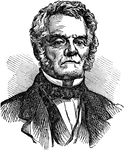
Thomas Holliday Hicks
Thomas Holliday Hicks (September 2, 1798 - February 14, 1865) was an American politician from Maryland.…
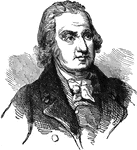
John Eager Howard
John Eager Howard (June 4, 1752 - October 12, 1827) was an American soldier and Senator from Maryland…

Johns Hopkins University
The Johns Hopkins University is a private university based in Baltimore, Maryland, United States. It…
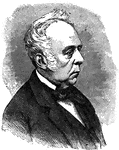
Reverdy Johnson
Reverdy Johnson (May 21, 1796 – February 10, 1876) was a statesman and jurist from Maryland.
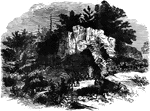
Killing's Cave
"Killing's Cave, on the banks of the Potomac, near Sharpsburg, the place of refuge of many citizens…

Lee's Army
"Lee's army crossing the Potomac at Williamsport, in scows guided by wires, after the invasion of Maryland."—…






